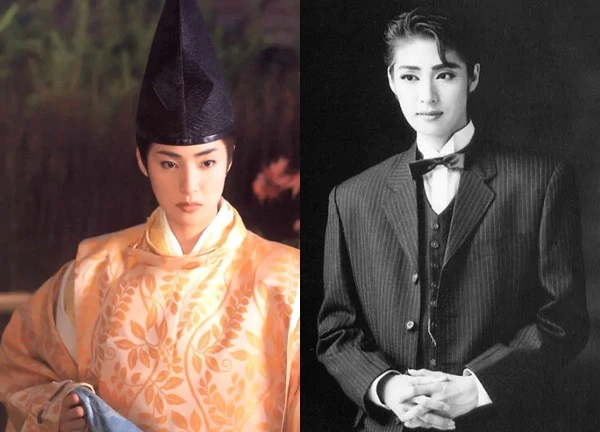A girl who is not like ordinary people spends 2.3 billion to "rebuild her face", the result is surprising

5 | 1 Discuss | Share
Recently, netizens dug up information about the traces of an ancient civilization found on the seabed of Japan. This information has divided the scientific community for the past 40 years, but there is still no consensus on this mystery.
In the middle of the sea, about 100 kilometers southwest of the main island of Okinawa, lies one of Japan's most controversial archaeological mysteries - the Yonaguni Monument. Not only has this massive reef structure sparked fierce debate about its origins for decades, but it has also sparked the public's imagination of an ancient civilization that was once swallowed up by the ocean.
In 1986, while scuba diving to survey tourist attraction sites, diver Kihachiro Aratake discovered a huge rock at a depth of about 25 meters under the water near Yonaguni Island. What was special was that this stone block was unlike any natural structure he had ever seen before: the steps were made up of large, flat stone slabs, stacked on top of each other at regular intervals and had unbelievably precise right angles.
This discovery quickly attracted the attention of the scientific community, especially geologists, archaeologists and historians. The biggest question arises: Is Yonaguni a product of nature, or is it a remnant of a civilization that has disappeared?
The Yonaguni Monument spans about 100 meters in length, is 60 meters wide, and is more than 25 meters tall. The structure is in the shape of a terrace, with flat, well-angled surfaces and stone slabs that seem to be separated, arranged in a certain order. Some notable details include the "giant staircases", stone corridors, a stone "arch", and especially a stone block that is said to be shaped like a turtle – a detail that many people associate with symbols in ancient Asian cultures.
The entire structure gives the impression of a man-made structure rather than a natural stone block. Its symmetry, proportions, and organization remind viewers of ancient temples or a city buried underwater.
One of the strong proponents of the Yonaguni hypothesis is the man-made work of Professor Masaaki Kimura, a geologist at the University of the Ryukyus. Over the years of research, he asserted that the structure was the remnant of an ancient civilization, possibly dating back to 5,000 to 10,000 years ago. Kimura said he has found plenty of evidence of human activity that existed here: rock cuts, man-made walkways, cistern-like structures, steps, and "stone pillars" erected in parallel.
He suggested that the area may have been on the ground before sinking due to earthquakes or sea level changes after the last Ice Age. If true, Yonaguni may be one of the world's oldest ancient underwater cities – even before the Egyptian pyramids.
However, not all scientists agree with Kimura's hypothesis. Some international geologists, such as Dr. Robert Schoch from Boston University, argue that Yonaguni's structure can be explained by natural geological phenomena. According to them, this area is inherently layered sedimentary rock, which is easily separated by natural planes. Cracks and erosion caused by underwater currents over thousands of years have inadvertently created lines that seem to have been carved by humans.
They also argue that no specific archaeological evidence – such as tools, skeletons, pottery or writing – has been found in the area that could prove the existence of a civilization there.
Not only from a scientific perspective, Yonaguni Monument has also become the focus of fantasy theories. Many people believe that this place is part of the continent of Mu - a legendary continent that is said to have sunk under the Pacific Ocean. The architectural details at Yonaguni remind many people of the descriptions of the city of Atlantis, or the forgotten temples mentioned in ancient Asian culture.
Yonaguni's ambiguity between nature and man-made is what makes this place so special – a space where history, legend and science meet where no one knows for sure the final answer.
Today, Yonaguni Monument is one of the most popular diving sites in Japan, attracting thousands of divers and tourists each year. Although it has not been officially recognized as an archaeological relic, the cultural, historical and scientific value it brings is undeniable.
If in the future, underwater archaeological technologies become more advanced and comprehensive surveys are conducted, Yonaguni could open the door to entirely new insights into human history — or at least, how nature can "craft" marvels that amaze humans.
Japanese beauty died in bathtub, 4 months later family did something shocking, fans flocked to pay their respects  Mỹ Hoa13:54:12 26/03/2025Four months after the passing of actress Miho Nakayama, her family has planned to hold a farewell ceremony in Tokyo, Japan at the end of April. This will be an opportunity for relatives, friends and fans to remember the talented artist.
Mỹ Hoa13:54:12 26/03/2025Four months after the passing of actress Miho Nakayama, her family has planned to hold a farewell ceremony in Tokyo, Japan at the end of April. This will be an opportunity for relatives, friends and fans to remember the talented artist.

5 | 1 Discuss | Share

1 | 0 Discuss | Share

2 | 0 Discuss | Share

4 | 0 Discuss | Share

4 | 0 Discuss | Share

2 | 0 Discuss | Share

1 | 0 Discuss | Share

4 | 0 Discuss | Share

1 | 0 Discuss | Share

3 | 0 Discuss | Share

2 | 0 Discuss | Share

3 | 1 Discuss | Share










2 | 0 Discuss | Report